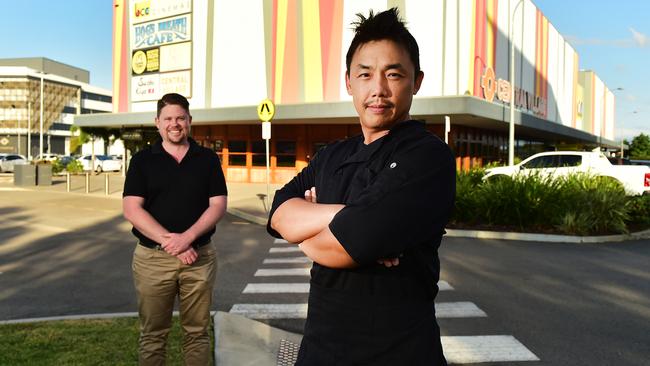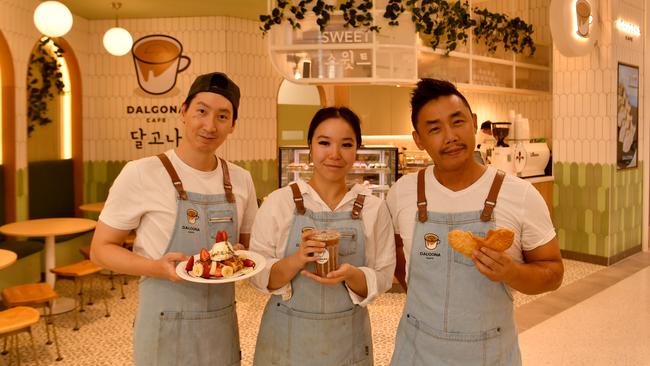Restaurant operators face difficult choices amid rising costs
A Townsville restaurateur says he may have to increase his prices as businesses across the state struggle with cost of living pressures.

Townsville
Don't miss out on the headlines from Townsville. Followed categories will be added to My News.
The cost-of-living crisis is slowly killing Queensland businesses as they face fresh economic challenges without the help of their regular customers who have suddenly disappeared into financial survival mode.
The Chamber of Commerce and Industry Queensland’s (CCIQ) December quarterly report revealed a dramatic deterioration in business confidence across the state, with more than 200 businesses reporting profit loss.
It comes as fresh consumer data collated by financial comparison site Finder found that Australian households had become increasingly worried about their bills and were now in “survival mode.”
Four in five Aussies admitted having to reduce their spending to cover rising cost of living, with the younger and more frivolous generations feeling most stressed due to having fewer savings.
Groceries, petrol and energy price hikes remained the biggest cost challenges, with 43 per cent of Aussies now worried about not being able to afford food compared to just 23 per cent in March 2021.
Business industry leaders have now issued a grim prediction for the year ahead, saying only the toughest would survive the overwhelming economic conditions while facing customer losses.
Hospitality businesses are also facing difficult decisions on how to maintain shrinking profits amid rising costs and declining trade, Townsville restaurateur Tak Lee says.
But just how he will manage these changes, Mr Lee says he is unsure.
“I really do not want to but I may have to find cheaper ingredients, increase prices or reduce costs. At the same time I do not want to lose customers,” Mr Lee said.
Mr Lee operates Korean cuisine restaurants Zizigo, Coo. King and Chi. King around the city including in the popular City Lane in the CBD as well as in the suburban shopping centres.
Mr Lee said everything was more expensive but that labour costs in particular had become extremely high since the emergence of the Covid-19 pandemic.
“Traditionally, restaurants set labour costs at 30 per cent (of total costs) but now they are more than 40 per cent. The most difficult increase is labour,” Mr Lee said.

He said the reasons for this included rising costs for superannuation, rising minimum wages, people wanting to work less and workers generally asking for higher pay.
The hospitality sector was also competing with the higher wages paid in sectors such as mining.
CCIQ chief executive Heidi Cooper said while Christmas sales had reflected pre-pandemic levels, businesses were anticipating a huge decrease in spending throughout 2023.
“Close to half of the (435) businesses surveyed expected the Queensland economy to perform weaker over the next 12 months and 53 per cent expected the national economy to perform weaker,” Ms Cooper said.
Key business concerns included inflation, interest rates, insurance, workforce shortages, energy and fuel hikes, which they said would lead to an “uncertain operating environment.”
Ms Cooper noted interest rates had not been ranked in the list of top five business concerns since December 2010, while insurance costs had not been listed as an issue since 2019 but was now placed in the top three.
“Energy prices have also become a significant constraint on Queensland business growth, with the energy cost constraint at its highest level since 2018,” she said.
Mr Lee said other increases in costs were occurring for services such as insurance, while the cost of all of the restaurants’ ingredients — chicken, meat and vegetables — had increased dramatically with most by more than 30 per cent.
“My menu price is still the same but I may think about rising prices a little,” Mr Lee said.
At the same time, takings were falling through by lower patronage at this time of year and a lower spend per customer.
February and March was normally the low season for the hospitality sector but customers were also spending less.
Mr Lee said he had many friends in businesses in Townsville and they all complained about the difficulties of rising costs.
Also, fewer people were walking around venues like City Lane.
“I don’t know what people are doing, maybe cooking for themselves at home,” Mr Lee said.
Managing partner of accounting and business advisory firm PVW Partners Carl Valentine said most if not all businesses were suffering from increased costs.
“Some are in the fortunate position where they can pass on those increases through higher prices to their customers. Others are stuck and they can’t do much about it,” Mr Valentine said.
He said increases like superannuation contributions, wages, interest rates on debt and electricity prices were outside of business’s control.
Originally published as Restaurant operators face difficult choices amid rising costs


